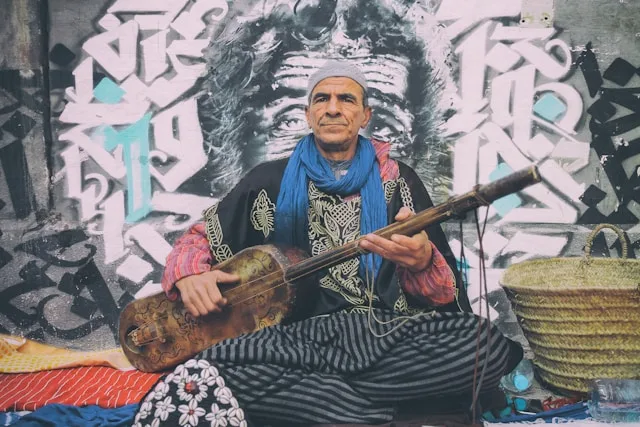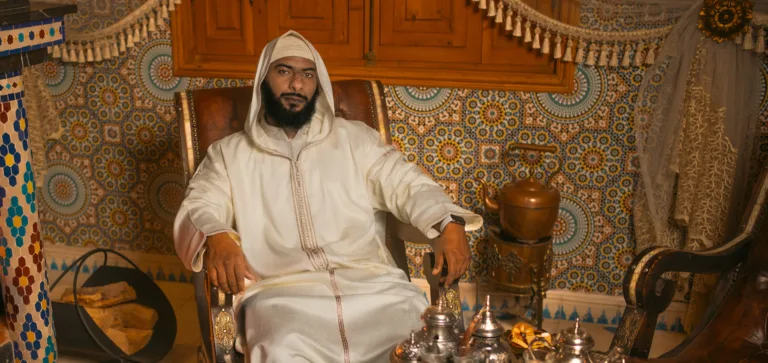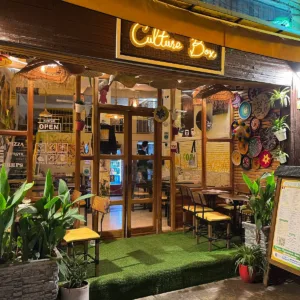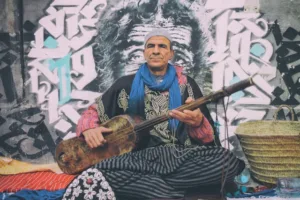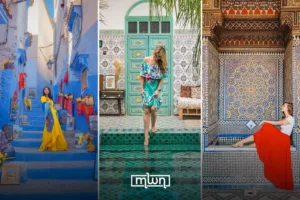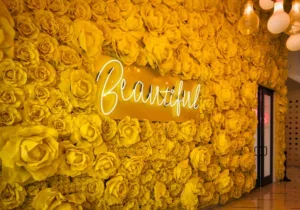What looks like a glamorous bridal throne once carried echoes of ancient ritual and hidden beliefs.
Fez– Moroccan weddings are not simply ceremonies; they’re cultural productions, each region adding its own flavor, yet all united by a shared reverence for marriage as a family milestone.
Whether held in a rural village or a cosmopolitan city, a wedding in Morocco is planned with military precision, echoing the famous local saying: “A wedding night takes a year to prepare.”
Traditionally, summer is the prime wedding season. The long days, harvest time, and return of Moroccan expatriates from abroad make August the month of choice for tying the knot.
Beyond the celebrations, weddings fuel entire industries: henna artists, “neggafat” (bridal dressers), drummers, folk musicians, caterers, and event halls all thrive during these months.
No matter how modern the occasion, Moroccan weddings still embrace their ceremonial grandeur.
The groom is hailed as “Moulay Sultan” (His Majesty the Sultan), while the bride becomes “Lalla Laaroussa” (Her Ladyship the Bride).
Processions that once traveled on horseback now glide through city streets in luxury cars, horns blaring and neighbors cheering.
Yet one ritual continues to steal the show: carrying the bride in the “Amaria”.
The ‘Amaria’: More than a Bridal Throne
The “Amaria” is an ornate, canopied seat lifted on the shoulders of attendants as music fills the air.
The bride, sometimes even the groom, is paraded above the crowd, celebrated as if quite literally placed “over everyone’s heads.” But where did this tradition come from?
Researcher Mustapha Ouarab traces its roots back to ancient, pre-Islamic rituals. He links the “Amaria” to sacred processions described by French scholar Robert Laoust, who compared it to the legendary “Bed of Lalla Mansoura.”
In centuries past, Moroccan nobility used similar canopies to carry brides, believing the ritual bestowed divine blessing, or protection from evil spirits.
In some regions, symbolism deepened further. In northwestern Morocco, for example, the “Amaria” was mounted on horseback rather than carried by men.
Families believed this ensured that the bride’s first child would be a boy. Elsewhere, wealthy rural families used the custom to honor their daughters, decorating wooden litters with fabrics lent by relatives and friends, parading them like royalty.
Legends surround the “Amaria”. One story tells of Lalla Mansoura, a young bride-to-be who vanished mysteriously while being carried to her groom’s house.
The procession’s canopy, covered in brightly colored fabrics, became known as her “bed” and later inspired the design of the “amaria”.
According to “Algamal” some even feared lifting the curtain on her canopy, believing it would blind the curious on the spot.
The theory suggests that both the Bed of Lalla Mansoura and the Moroccan “Amaria” are remnants of Berber religious festivals, where symbolic weddings between gods and goddesses were celebrated, and sometimes ended in sacrificial tragedy.
Over time, these pagan elements faded, leaving only the decorative procession.
Bride carried into modern age
Today, the mystical aura of the “amaria” has softened. For many, it’s simply an iconic moment of Moroccan weddings, representing honor, beauty, and the community’s joy.
Others still whisper that it wards off the evil eye or shields the bride from misfortune. Either way, its symbolism has shifted from sacred ritual to glamorous spectacle.
While modern weddings may feature DJs instead of drum troupes and limousines instead of horses, the “amaria” endures.
Its form has evolved, wood replaced by lighter frames, traditional fabrics swapped for dazzling new designs, but its essence remains the same: a celebration of the bride’s place of honor, high above the crowd, carried on shoulders, and showered with music, applause, and blessings.
Moroccan weddings show that tradition is not static. Customs like the “Amaria” are reinterpreted with every generation, part pageantry, part heritage, and always unforgettable.




